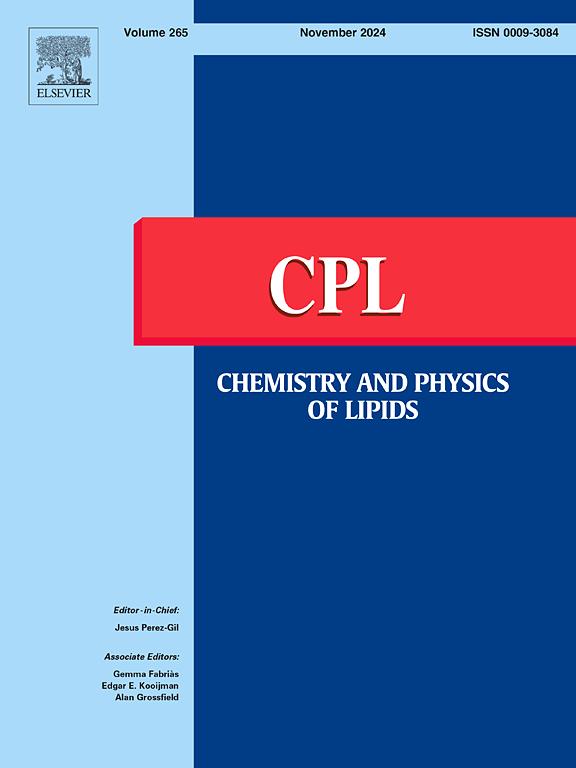Solid lipid nanoparticles in the diagnosis and treatment of prostate cancer: A comprehensive review of two decades of advancements
IF 2.8
3区 生物学
Q2 BIOCHEMISTRY & MOLECULAR BIOLOGY
引用次数: 0
Abstract
Background
Prostate cancer (PC) is one of the most prevalent malignancies among men, with a staggering 1.5 million new cases and 350,000 deaths reported globally in 2022. Conventional treatment methods, including chemotherapy, radiation therapy, surgery, and hormonal therapy, often encounter significant challenges such as systemic toxicity and diminished efficacy, particularly in the advanced stages of the disease. Treatment of prostate cancer remains a formidable challenge because of the poor water solubility of many chemotherapeutic agents, which severely limits their bioavailability. However, the rise of targeted therapies has catalyzed the development of innovative drug delivery systems designed to enhance the bioavailability and precision of therapeutic agents. Solid lipid nanoparticles (SLNs) are a promising solution that can effectively encapsulate chemotherapeutic agents and genetic materials. Their unique attributes, such as biocompatibility, controlled release profile, and customizable surface properties, make them advantageous alternatives to conventional treatment strategies, effectively addressing the inherent limitations of prostate cancer therapy.
Methods
To provide the context, relevant publications were searched on Google Scholar, PubMed, Science Direct, Dimension AI, and EBSCO Host using specific keywords such as controlled drug release, cationic surfactants, drug delivery, drug loading, drug encapsulation lipid, prostate cancer, surface modification, solid lipid nanoparticles (SLNs), tumor microenvironment, to list a few. We did not add any limits to the publication date during the inclusion of papers. However, it is noteworthy that the initial reports including the aforementioned keywords have been published starting from 2010.
Conclusion
SLNs demonstrate substantial potential as effective nanocarriers for precise delivery of chemotherapeutic agents and genetic materials to prostate cancer cells. Their targeted delivery to these cells by surface modification with suitable ligands, antigens, peptides, and other recognition molecules has enhanced therapeutic efficacy. Further research on the interaction of SLN with the tumor environment is imperative to fully comprehend the uptake pathways. Extensive translation and preclinical studies are required to determine the safety and efficacy of SLNs before their use in clinical settings.
固体脂质纳米颗粒在前列腺癌诊断和治疗中的应用:二十年来进展的全面回顾。
背景:前列腺癌(PC)是男性中最常见的恶性肿瘤之一,2022年全球报告的新病例高达150万例,死亡人数达到35万例。传统的治疗方法,包括化疗、放射治疗、手术和激素治疗,经常遇到重大的挑战,如全身毒性和疗效下降,特别是在疾病的晚期。前列腺癌的治疗仍然是一个巨大的挑战,因为许多化疗药物的水溶性差,这严重限制了它们的生物利用度。然而,靶向治疗的兴起促进了创新药物输送系统的发展,旨在提高治疗药物的生物利用度和精度。固体脂质纳米颗粒(SLNs)是一种很有前途的解决方案,可以有效地封装化疗药物和遗传物质。它们独特的特性,如生物相容性、控释特性和可定制的表面特性,使它们成为传统治疗策略的有利替代品,有效地解决了前列腺癌治疗的固有局限性。方法:以谷歌Scholar、PubMed、Science Direct、Dimension AI、EBSCO Host等网站为背景,检索药物控释、阳离子表面活性剂、给药、载药、包封脂质、前列腺癌、表面修饰、固体脂质纳米颗粒(SLNs)、肿瘤微环境等相关文献。在收录论文的过程中,我们没有对发表日期进行任何限制。但值得注意的是,包含上述关键词的初始报告是从2010年开始发布的。结论:sln作为一种有效的纳米载体,具有向前列腺癌细胞精确递送化疗药物和遗传物质的巨大潜力。它们通过与合适的配体、抗原、肽和其他识别分子进行表面修饰,靶向递送到这些细胞中,提高了治疗效果。进一步研究SLN与肿瘤环境的相互作用是充分了解其摄取途径的必要条件。在临床使用sln之前,需要进行广泛的翻译和临床前研究来确定其安全性和有效性。
本文章由计算机程序翻译,如有差异,请以英文原文为准。
求助全文
约1分钟内获得全文
求助全文
来源期刊

Chemistry and Physics of Lipids
生物-生化与分子生物学
CiteScore
7.60
自引率
2.90%
发文量
50
审稿时长
40 days
期刊介绍:
Chemistry and Physics of Lipids publishes research papers and review articles on chemical and physical aspects of lipids with primary emphasis on the relationship of these properties to biological functions and to biomedical applications.
Accordingly, the journal covers: advances in synthetic and analytical lipid methodology; mass-spectrometry of lipids; chemical and physical characterisation of isolated structures; thermodynamics, phase behaviour, topology and dynamics of lipid assemblies; physicochemical studies into lipid-lipid and lipid-protein interactions in lipoproteins and in natural and model membranes; movement of lipids within, across and between membranes; intracellular lipid transfer; structure-function relationships and the nature of lipid-derived second messengers; chemical, physical and functional alterations of lipids induced by free radicals; enzymatic and non-enzymatic mechanisms of lipid peroxidation in cells, tissues, biofluids; oxidative lipidomics; and the role of lipids in the regulation of membrane-dependent biological processes.
 求助内容:
求助内容: 应助结果提醒方式:
应助结果提醒方式:


